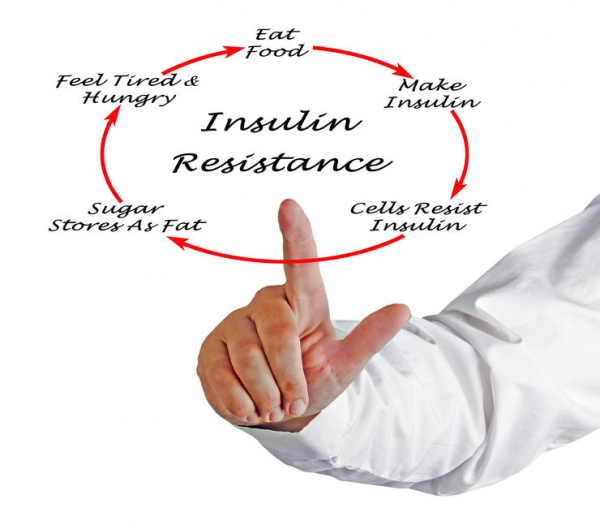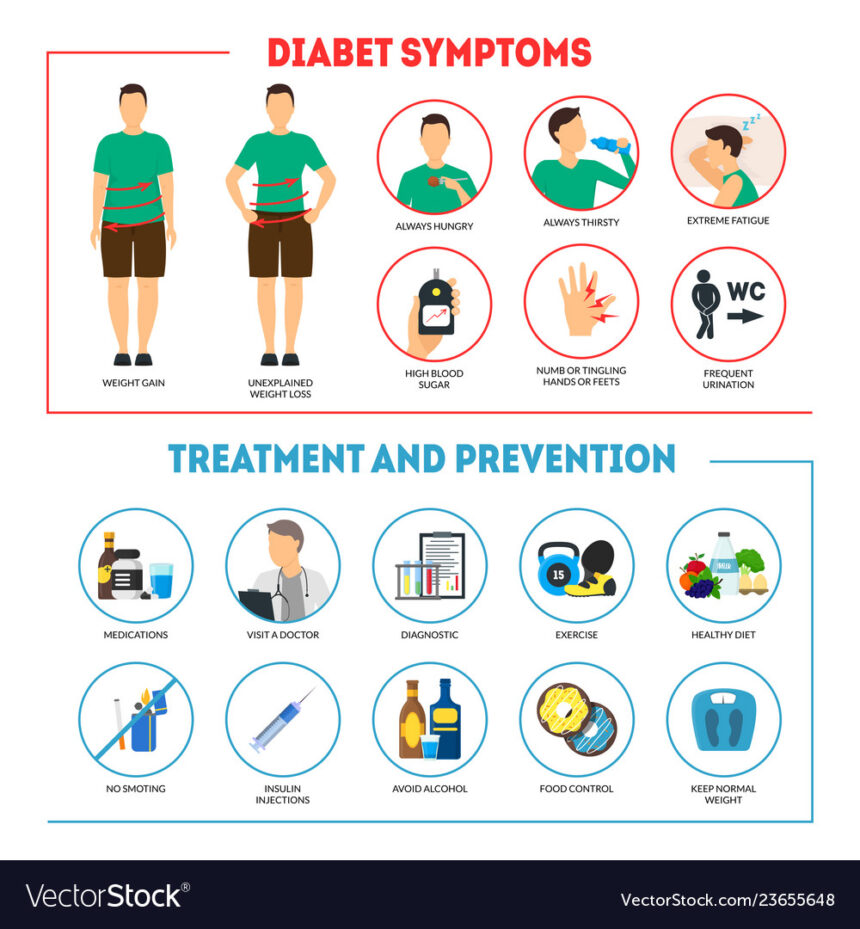Type 2 diabetes has become an increasing problem in the world. Because it is chiefly linked to obesity, in my 10 years of consulting career I have observed and even researches have proved it 3 out of 5 people are diabetic or pre diabetic, its spreading like an epidemic.
As per researches, before you become Diabetic, you have Insulin resistance that too almost 13 years prior you turning to be diabetic. If you could reverse insulin resistance you can rather prevent yourself being diabetic, as I always said and believed in prevention is better than cure.
What is Insulin Resistance?

Insulin resistance isn’t a disease; it’s more a state of being in which insulin and glucose no longer maintain that working relationship I described above.
How does this happen? Well, let’s go back to the part where I was talking about the overconsumption of foods that break down into glucose. When you frequently eat too much sugar or too many carbs for your unique body to handle, your body in a sense becomes desensitized to it.
The cycle that creates insulin resistances aka “The Dopamine Trap” goes something like this:
Eat too Much Sugar/Carbs → leads to → Chronically elevated levels of insulin → leads to → Elevated levels of serotonin → leads to → Elevated levels of dopamine (creating a sensation of temporary pleasure) → leads to → Sugar cravings + carb cravings + wild blood sugar highs and lows
You repeat this cycle over and over and over again.
But it doesn’t end there. As you continually seek to fulfil those cravings and receive peaks of temporary pleasure, the amount of sugar and carbohydrate you need in order to fulfil those demands increases.
Your body will eventually reach its threshold for dealing with all of this rubbish, which is the point at which insulin resists working as it’s normally supposed to. I know it’s called insulin resistance, but I almost wish it was called insulin confusion because that’s really what it is.
When insulin resistance happens, your muscle and liver cells say to insulin “hey, we’re packed to the gills with glucose and literally about to burst. Find another place to store that glucose!”. Because of these rejections, insulin basically can’t keep up with the normal storage process (this is part of what creates the wild blood sugar highs and lows) and gets lost and confused. So then, your pancreas reasons “I got this! Give me a sec. I’ll just make some more insulin to help out.”
However, those new insulin hormones fail as well, so you end up with both elevated blood glucose AND elevated insulin levels. That excess glucose that can’t get stored in the liver or muscle cells usually ends up getting deposited as fat.
Clearly, this whole process not only messes with your blood sugar regulation and your hormone balance – it also slows your metabolism way down and makes you gain weight.
Let’s start with the signs before we go on to the preventative strategies. You likely have imbalanced blood sugar and potentially insulin resistance if you have:
- Sugar cravings
- Carbohydrate cravings
- Hunger pangs
- Eating every 2-3 hours
- Moodiness
- Anxiety
- A waist larger than 35” (women) or 40” (men)
- PCOS, Irregular Periods, Infertility issues, or ovarian cysts
- A fasting insulin level above 5
- High triglycerides. Levels of 120 or higher
- Low HDLs. Low-density lipoprotein levels below 50 for women and 40 for men – or taking medication to raise low high-density lipoprotein (HDL) levels.
- High blood pressure. Readings of 130/85 mmHg or higher, or taking medication to control high blood pressure
- You develop dark skin patches. If insulin resistance is severe, you may have visible skin changes. These include patches of darkened skin on the back of your neck or on your elbows, knees, knuckles or armpits. This discoloration is called acanthosis nigricans.
Widespread harm caused by Insulin resistance which leads to Diabetes-
- Cardiovascular disease (disease of the heart and blood vessels)is the main cause of death in people with diabetes. About three quarters of people with diabetes die of cardiovascular disease.
- Kidney disease. Because the kidneys are densely packed with millions of tiny filtering capillaries, they are especially likely to be damaged by diabetes.
- Vision damage. The retina, the delicate membrane that lines the back of the eyeball, may be damaged by diabetes and also increases the risk of developing cataracts and glaucoma.
- Nerve damage, or neuropathy- Nerves can also be damaged when damage to the capillaries that feed them cuts off their blood supply.
How to Reverse Insulin Resistance
Although there are many ways to reverse insulin resistance and stabilize your blood sugar, these are the best and quickest strategies you can implement right away.
- Eat More Good Fat & Slow-Burning Carbs-Reduce processed foods + sugars and instead, eat more healthy fats. Below are some examples that you can easily add to your grocery list.
Good Fats
- Coconut oil
- Ghee
- Butter (grass-fed)
- Olive oil
- Olives
- Sprouted nuts/seeds + nut/seed butters
- Salmon
Slow-Burning Carbs
- Sweet potatoes
- Quinoa
- Pumpkin
- Squash
- Brown rice
- Properly soaked/sprouted chickpeas, beans, or lentils
Foods to avoid- Certain foods are more likely to raise blood sugar. These foods should be limited or avoided to help maintain a steady blood sugar level:
- sweetened beverages, including fruit juices, soda, and fountain drinks
- alcohol, particularly beer and grain alcohol, especially in large quantities
- grains, whether refined or whole, may worsen insulin sensitivity in some people
- starchy vegetables, such as potatoes, pumpkin, corn, and yams
- processed snacks and boxed foods
- excessive sugary sweets, such as cupcakes, ice cream, or chocolate bars
- white bread, pasta, and flour, which is lower in fibre than whole grain
- fried foods, even if the food is otherwise healthful
- foods high in saturated fats, including chocolate, butter.
- Physical Activity- Increase you’re the amount of time you spend moving. It doesn’t all have to be intense bouts of exercise time either. It can just be increasing the amount of movement you do all throughout the day. If you work from home, take dance breaks. If you work from an office, take walking breaks and make sure to take the stairs! Maybe take your walk outside and grab some Vitamin D straight from the source. Low impact movements count for a lot too. In fact, they’re actually really great at helping to stabilize blood sugar because they improve insulin sensitivity.
- De-stress- Being stressed stimulates the production of corticosteroids, the “stress hormones,” which increase blood glucose levels. By the same token, studies show that reducing stress can lower blood sugar levels. Try meditation or focused breathing techniques. Just doing something you enjoy, like gardening or reading, can be a good way to de-stress. Exercise (aerobic exercise, yoga, tai chi) is an excellent de-stressed. Support groups and therapy may prove very helpful as well.
- Use Supplements that Stabilize-If you currently have diabetes or are just transitioning off of a diet that’s been very high in processed foods and sugars, you may find that you need a little extra help. A lot of times, sugar cravings. This might mean that in order to curb those cravings and temporarily aid you as you’re making these changes, you need a little helping hand.
That’s where some good quality supplementation that help manage blood sugar and sugar cravings are:
- L-glutamine – an amino acid that speedily makes its way to the brain and becomes a quick source of energy
- Cinnamon – improves the effectiveness of insulin and increases glucose metabolism significantly
- Bone broth- rich in glycine, an amino acid that controls how much glucose is produced from non-carb sources which helps immensely when it comes to regulating blood sugar levels
- Certain botanicals, including fenugreek, ginseng, bitter melon, aloe vera, gurmar (an Indian herb whose name means “sugar destroyer”), and Coccinia indica (ivy gourd) may help to control blood glucose levels.
- Medications- If lifestyle measures don’t sufficiently reduce blood sugar levels, then medications may be prescribed. Medications may lower glucose levels by increasing insulin production by the pancreas, boosting cell sensitivity to insulin, and delaying absorption of glucose from the intestines.
In mainstream medicine, diabetes is a circle of chemicals, leading from the insulin produced naturally by the pancreas to the insulin injections prescribed for millions of diabetics. Yet a much larger circle is actually involved. The circle of life embraces who you are and how you want to live. Diabetes, like every other lifestyle disorder, is an indicator that change is required. It means redefining how you want to achieve well-being in the healthiest possible way
Make a game plan for reversing insulin resistance.
As with any big goal in life, it’s best to start with small, attainable, and realistic goals. We now know that the main factors which help us reverse insulin resistance and lose weight include more nutritious food cooked from home, lots of veggies, adequate sleep, proper stress management, smoking cessation, and physical activity. It’s also important to maintain regular check-ups with your doctor. Even if you feel healthy, with no apparent symptoms, it’s still good to have preventative check-ups and lab monitoring as often as recommended by your physician.
Insulin resistance can seem like a big monster to tackle. But, with the right information, mindset, and support, you can make positive, lifelong changes in your life. You got this!
I am here to support you in your health journey so if you need help you can always contact me.

